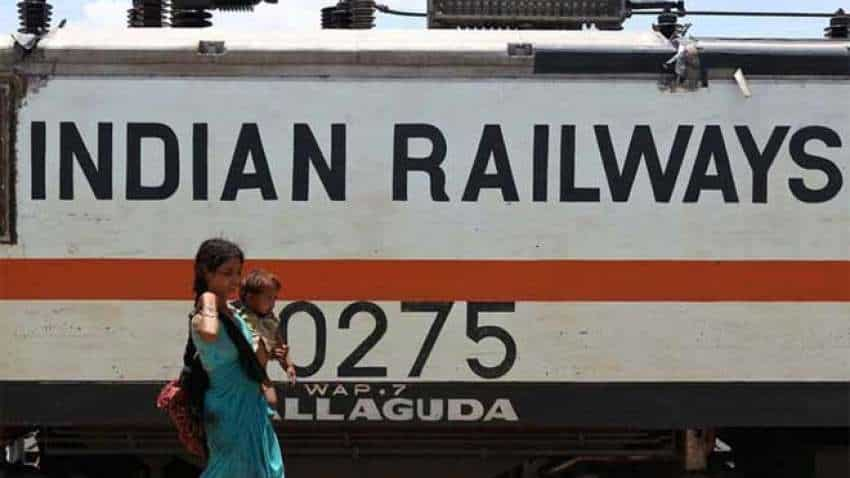Rail stocks chug into bull zone; RVNL, Railtel gain over 20% in one week

Rail stocks chug into bull zone; RVNL, Railtel gain over 20% in one week
The recent surge in railway stocks, with shares of companies like Rail Vikas Nigam Ltd (RVNL), Titagarh Rail Systems, Jupiter Wagons, Texmaco Rail and Engineering, IRCTC, Railtel Corporation of India, and RITES experiencing gains of 5-24 percent over the past week, has attracted attention from both technical chartists and fundamental analysts.
From a technical standpoint, some chartists may argue that many of these railway stocks are now in the overbought zone. This suggests that their prices may have risen too quickly in a short period, potentially leading to a correction in the near future. Overbought conditions are often seen as a signal for caution among traders and investors.
On the other hand, fundamental analysts take a longer-term view and consider factors beyond short-term price movements. They argue that many of these railway stocks had been relatively stagnant for a considerable period, which led to suppressed values. This means that the recent surge could be a reflection of the market recognizing the true value of these stocks, and their growth potential.
Furthermore, there is speculation in the market about potential mergers in the railway sector. Mergers can bring several advantages to companies, including cost reduction, increased efficiency, and synergy benefits. If such mergers were to occur in the railway industry, it could lead to a more consolidated and competitive landscape, potentially benefiting the involved railway players.

Investors and analysts will closely monitor the developments in the railway sector, including any potential mergers and their impact on the industry’s dynamics. As with any investment, it’s essential for investors to conduct thorough research, consider their investment goals, and evaluate both technical and fundamental factors before making decisions in the stock market.
The recent shifts in investment within the railway sector reflect growing interest among investors who see significant value in this industry. One of the key indicators of this interest is the substantial capital expenditure utilization by the Indian Railways in the first five months of the fiscal year from April 1 to August 31, 2023.
During this period, the Indian Railways spent around Rs 1,15,000 crore, marking the highest-ever capital expenditure utilization at approximately 48 percent. This level of spending demonstrates the government’s commitment to investing in railway infrastructure and modernization.
Additionally, reports suggest that the Indian Railways is actively working on a Production-Linked Incentive (PLI) program to incentivize domestic production of specific components, including wheels, brakes, and transmission systems designed for Linke Hofmann Busch (LHB) and Vande Bharat train sets. The PLI scheme is expected to have a substantial quantum, estimated to be in the range of Rs 800-1,200 crore, and is anticipated to span over three years.
Such initiatives are aimed at promoting domestic manufacturing and self-reliance, aligning with the broader ‘Make in India’ campaign. By encouraging the production of critical railway components domestically, the government seeks to reduce dependence on imports, enhance the efficiency and reliability of railway operations, and stimulate economic growth through the development of the manufacturing sector.
Investors are likely taking note of these developments and the potential opportunities presented by increased government spending and initiatives to boost domestic manufacturing in the railway sector. The combination of higher capital expenditure, strategic programs like PLI, and market dynamics may contribute to the recent surge in investor interest and stock prices in the railway industry. As always, investors should carefully evaluate investment opportunities, consider their investment objectives, and conduct thorough research before making investment decisions in any sector.
The significant boost in capital expenditure allocated for the Indian Railways in the 2023-24 fiscal year is a noteworthy development. With a substantial allocation of Rs 2.4 lakh crore, this marks a substantial increase of 65.6 percent compared to the previous year. These funds are earmarked for a wide range of railway infrastructure projects, emphasizing various aspects such as tracks, wagons, trains, electrification, signalling systems, and station facilities, with a strong focus on enhancing safety measures.
Finance Minister Nirmala Sitharaman made this historic announcement during her Budget speech on February 1, highlighting that this allocation is nine times higher than what was allocated in 2013. Such a significant increase in funding underscores the government’s commitment to the modernization and expansion of the Indian Railways network.
To provide further context, it’s estimated that substantial investments ranging from Rs 200-300 crore each will be required to bolster the production of essential components like wheels, axles, and braking systems. Additionally, a similar level of investment is anticipated for the expansion of manufacturing facilities related to locomotives and track machines. These investments align with the government’s broader objectives of promoting domestic manufacturing, self-reliance, and the development of critical railway infrastructure components within India.
The combination of increased capital expenditure, initiatives like Production-Linked Incentives (PLI) to stimulate domestic production, and the modernization of railway infrastructure paints a positive picture for the future of the Indian Railways sector. It signifies a strong commitment to improving transportation networks, enhancing safety measures, and boosting economic growth through infrastructure development.




